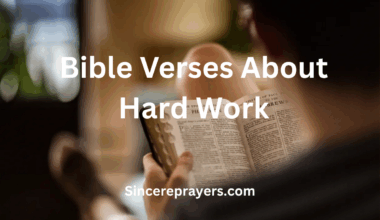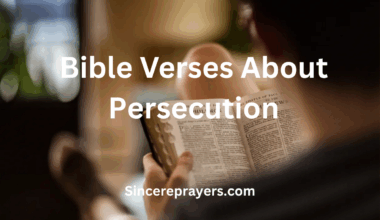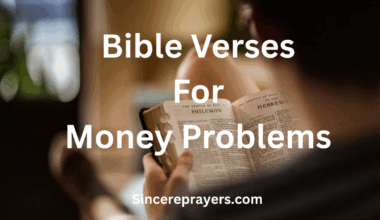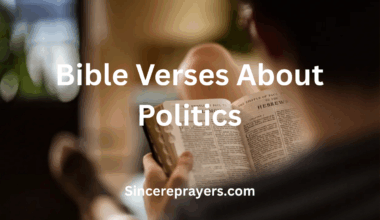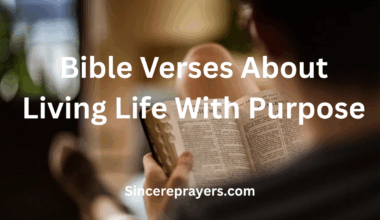Dancing is one of the most expressive forms of worship in the Bible, symbolizing joy, celebration, and surrender to God. From the exuberant praise of King David to the jubilant celebrations of Israel in times of deliverance, dance is portrayed as an outward manifestation of the heart’s devotion. Through dance, believers are reminded that worship encompasses not only song and prayer but also the movement of our entire being in reverence and thanksgiving to God.
The bible verses about dancing frequently depict dance as a natural response to God’s blessings. Whether it is rejoicing over victories, expressing gratitude for His protection, or celebrating the fulfillment of His promises, dance communicates the innermost emotions of the soul. It transcends language, culture, and age, allowing every believer to participate in the joy of the Lord. In this sense, dance becomes both a personal expression of devotion and a communal act of praise.
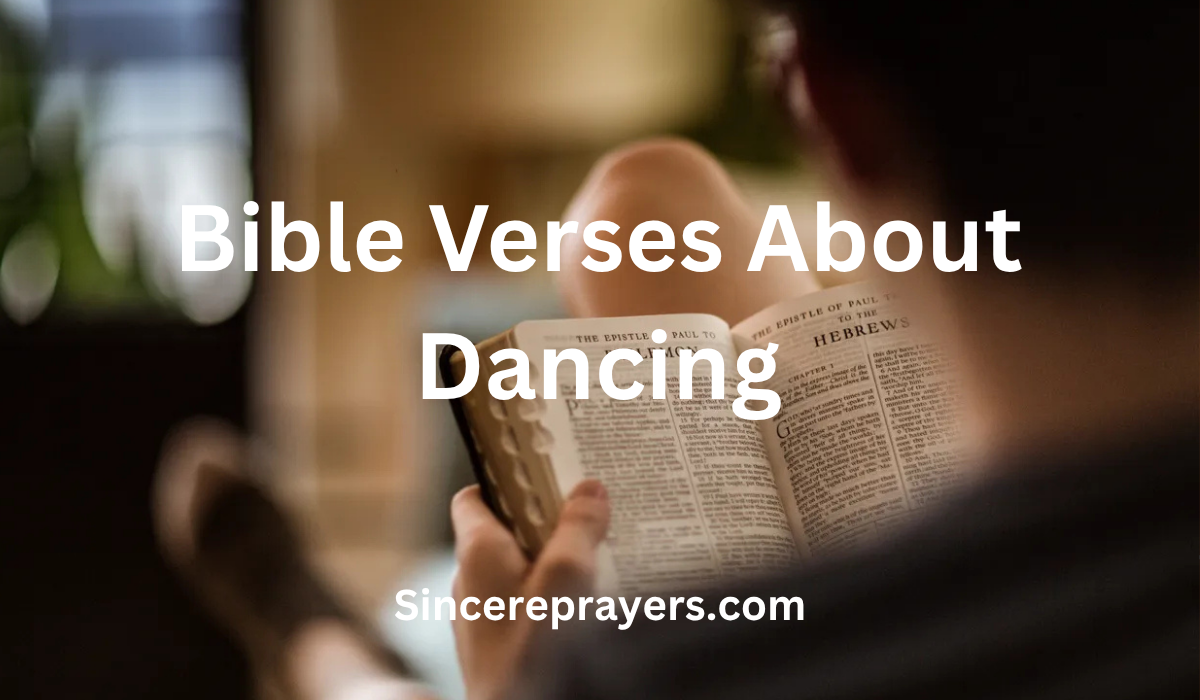
Moreover, dancing before God is not just about physical movement; it reflects the alignment of our hearts with His Spirit. When we dance in worship, it signifies the breaking of burdens, the release of joy, and the acknowledgment of God’s sovereignty over our lives. This act of praise can inspire others, strengthen faith, and create a spiritual atmosphere of celebration. Dance, in biblical context, symbolizes freedom, restoration, and the overflow of God’s love.
In this article, we explore 35 powerful Bible verses about dancing that inspire, instruct, and encourage believers to embrace joy and worship in motion. Each verse provides insight into how dance reflects God’s presence in our lives and invites us to respond with gladness, gratitude, and wholehearted devotion. Through these Scriptures, you will see that dancing is not merely an art form but a spiritual expression that glorifies God and deepens our relationship with Him.
35 Beautiful Bible Verses About Dancing in 2025
1. Exodus 15:20-21
“Then Miriam the prophetess, Aaron’s sister, took a timbrel in her hand, and all the women followed her, with timbrels and dancing.”
After crossing the Red Sea, Miriam led the women of Israel in joyous dance and music to celebrate God’s deliverance. This act of worship demonstrates that dancing can be a public and communal expression of gratitude. It highlights the spiritual significance of movement in praising God, showing that physical expression can amplify heartfelt worship and unite believers in rejoicing over God’s mighty acts.
2. Psalm 149:3
“Let them praise his name with dancing and make music to him with tambourine and harp.”
This psalm emphasizes that dancing is an integral part of praising the Lord. It encourages believers to combine movement and music to glorify God. By dancing in worship, we express joy, gratitude, and reverence in a tangible way. The verse reminds us that our bodies can participate in spiritual praise, transforming personal happiness and communal worship into a celebration that honors God’s majesty and goodness.
3. Psalm 150:4
“Praise him with the sounding of the trumpet, praise him with the harp and lyre, praise him with timbrel and dancing.”
Here, dance is listed alongside musical instruments as a vital component of worship. This verse teaches that praise is multidimensional, involving sight, sound, and motion. Dancing before God symbolizes heartfelt submission and a joyful response to His greatness. It reminds us that worship is not limited to words or melodies; our movement can communicate adoration and gratitude, creating a dynamic offering of praise.
4. 2 Samuel 6:14
“Wearing a linen ephod, David danced before the Lord with all his might.”
King David’s exuberant dance during the return of the Ark of the Covenant shows that worship can be vigorous and uninhibited. David’s wholehearted movement reflects complete surrender to God and an unashamed expression of joy. This verse encourages believers to worship freely, demonstrating that dancing can be an authentic, physical declaration of faith and a heartfelt response to God’s presence in our lives.
5. Jeremiah 31:13
“Then young women will dance and be glad, young men and old as well. I will turn their mourning into gladness; I will give them comfort and joy instead of sorrow.”
This prophecy portrays dance as a response to God’s restoration and blessing. Dancing symbolizes the transformation of sorrow into joy, illustrating the healing power of God in our lives. It emphasizes that movement can reflect internal spiritual renewal, reminding believers that joy in the Lord transcends circumstances and invites communal celebration of His faithfulness and love.
6. Psalm 30:11
“You turned my wailing into dancing; you removed my sackcloth and clothed me with joy.”
This verse beautifully illustrates the transformative power of God in our lives. Wailing and mourning are replaced with dancing and joy, showing that worship through movement can reflect spiritual renewal. Dancing here symbolizes the heart’s restoration and a tangible celebration of God’s mercy and deliverance. Believers are encouraged to respond to God’s intervention with physical expressions of gratitude, letting their joy overflow into every aspect of life.
7. Psalm 68:25
“In front are the singers, after them the musicians; with them are the young women playing tambourines.”
In this passage, dance is integrated with music in a celebratory procession. The young women’s tambourines and movement demonstrate that worship can involve joyful collaboration of song, rhythm, and dance. This verse teaches that communal celebration enhances spiritual experience, as movement and music work together to glorify God. It reminds believers that expressing joy in worship can be both structured and spontaneous, reflecting unity and devotion.
8. Ecclesiastes 3:4
“A time to weep and a time to laugh, a time to mourn and a time to dance.”
Solomon’s words remind us that life is marked by seasons, and dancing is a divine invitation to embrace times of joy. This verse highlights the spiritual balance between sorrow and celebration, teaching that worship through dance can be a natural response to God’s blessings. Dancing becomes a meaningful acknowledgment of God’s providence and the fleeting nature of human trials, reflecting gratitude and reverent joy.
9. 1 Samuel 18:6
“When the men came, they told Saul, ‘David has defeated thousands of the Philistines.’ And Saul’s daughter Michal danced for joy.”
Michal’s dancing illustrates how celebration can accompany victory and divine favor. Dance here communicates triumph and gratitude in a way that words alone cannot. It shows that physical expression of joy is appropriate in times of blessing, aligning our hearts and bodies in praise. This verse encourages believers to embrace moments of rejoicing with uninhibited movement as a form of worship and recognition of God’s hand in our successes.
10. Judges 21:21
“Go and watch. If the daughters of Shiloh come out to dance in the dances, then come out of the vineyards and seize each one for yourselves.”
While the context is historical and specific, the reference to the young women dancing indicates that dance was a common form of communal celebration in Israel. This highlights dance as a culturally significant expression of joy and festivity. Believers today can see this as an example of how God’s people historically celebrated occasions through movement, integrating rhythm, music, and community into worshipful and joyful activity.
11. Psalm 149:5
“Let the faithful rejoice in this honor and sing for joy on their beds.”
Although primarily about singing, rejoicing is often accompanied by movement and dance. This verse emphasizes the joy of God’s faithful being expressed fully, whether privately or publicly. Dancing before the Lord reflects our internal delight externally, teaching believers that worship is not limited to vocal praise. Movement enhances spiritual celebration, letting joy become visible and tangible, creating an intimate and lively connection with God.
12. Psalm 132:9
“May your priests be clothed with your righteousness; may your faithful people sing for joy.”
Here, the joy of God’s people is a response to His covenant faithfulness, often expressed through music and dance. Dancing becomes an act of celebrating God’s promises and righteousness. By combining movement with praise, believers experience a holistic expression of gratitude. This verse reminds us that worshipful dance can both honor God and cultivate spiritual joy, reinforcing the connection between God’s blessings and heartfelt celebration.
13. Jeremiah 31:4
“I will build you up again, and you, Virgin Israel, will be rebuilt. Again you will take up your timbrels and go out to dance with the joyful.”
God’s promise of restoration is celebrated through dance, showing that movement can be a spiritual declaration of hope. Dancing symbolizes renewed life, gratitude, and joy in God’s faithfulness. Believers can see this as an encouragement to rejoice physically and spiritually in times of personal or communal restoration. It reminds us that dance communicates triumph over adversity and the blessings of God in a deeply tangible way.
14. Isaiah 55:12
“You will go out in joy and be led forth in peace; the mountains and hills will burst into song before you, and all the trees of the field will clap their hands.”
Although metaphorical, this verse likens the joy of God’s people to movement and celebration in creation. Dancing can reflect our response to God’s peace and salvation. The imagery of clapping trees mirrors human movement in worship, reminding believers that dance is a natural expression of joy, harmony, and gratitude. It emphasizes that the physical expression of praise resonates with the entire creation rejoicing in God’s goodness.
15. Zephaniah 3:17
“The Lord your God is with you, the Mighty Warrior who saves. He will take great delight in you; in his love he will no longer rebuke you, but will rejoice over you with singing.”
God’s delight in His people is a powerful inspiration for human celebration. While the verse mentions singing, rejoicing can naturally extend to dance. Movement in worship mirrors God’s own delight in us, making dance a reflection of divine joy. Believers are encouraged to embrace dance as an expression of their relationship with God, celebrating His love and faithfulness in both private devotion and public worship.
16. Psalm 47:1
“Clap your hands, all you nations; shout to God with cries of joy.”
Though clapping is mentioned, it naturally complements dance as an outward expression of worship. This verse encourages believers to engage their entire being in praise—movement, sound, and spirit combined. Dancing before God amplifies joy and celebrates His sovereignty. It reminds us that worship is holistic, involving not just the heart and voice, but also physical expressions that reflect the exuberance and gratitude we feel for God’s goodness.
17. Psalm 100:2
“Worship the Lord with gladness; come before him with joyful songs.”
Gladness in worship often manifests through dance. This verse teaches that our approach to God should be full of joy, and physical movement can communicate that joy. Dancing allows believers to embody praise, connecting heart, mind, and body in worship. It serves as a reminder that worship is not solely a vocal act; it can be expressed through dynamic, heartfelt movement that honors God’s presence and celebrates His blessings.
18. Psalm 149:6
“May the praise of God be in their mouths and a double-edged sword in their hands.”
While this verse emphasizes verbal praise, the spirit of celebration can extend to dance. Movement can enhance our worship, making praise a full-bodied experience. Dancing before the Lord strengthens spiritual expression, demonstrating joy and reverence simultaneously. This verse teaches believers that celebration can be proactive and dynamic, expressing devotion in ways that engage the body as well as the heart, reinforcing the power and presence of God in our lives.
19. Exodus 15:1-2
“Then Moses and the Israelites sang this song to the Lord: ‘I will sing to the Lord, for he is highly exalted. Both horse and driver he has hurled into the sea.’”
While this passage focuses on song, celebration often includes dance. The Israelites’ worship was likely accompanied by movement, reflecting gratitude for God’s mighty deliverance. Dancing in such moments symbolizes joy over victory and deliverance. It reminds believers that worship can be energetic and communal, and movement can communicate praise and thanksgiving in a way words alone cannot. Dance is an appropriate response to God’s miraculous interventions.
20. Judges 11:34
“When Jephthah came to his home in Mizpah, who should come out to meet him but his daughter, dancing to the sound of timbrels!”
Jephthah’s daughter dancing reflects celebration and ritual expression in Israelite culture. Dance here symbolizes joy and engagement in communal life. It teaches that physical expressions of happiness are valuable forms of honoring God and marking important moments. Believers can see in this verse that movement is a natural response to blessings, victories, or joyful occasions, connecting community, tradition, and worship in tangible ways.
21. Psalm 51:12
“Restore to me the joy of your salvation and grant me a willing spirit, to sustain me.”
Restored joy often expresses itself through movement, including dance. When God renews our spirit, dancing becomes a natural response to salvation and divine favor. This verse teaches that worship can be physical as well as spiritual. By dancing, believers demonstrate the restoration of joy in their hearts, allowing their bodies to participate in thanksgiving and praise, embodying the spiritual renewal God provides through His mercy and grace.
22. Psalm 92:4
“For you make me glad by your deeds, Lord; I sing for joy at what your hands have done.”
Joy over God’s deeds often inspires movement. This verse shows that when we recognize His blessings, dancing can naturally accompany our praise. Physical expression reflects our inner gladness and amplifies worship. Dancing before the Lord communicates gratitude and admiration for His works. Believers are reminded that worship is not passive; movement can be a powerful reflection of heartfelt joy, emphasizing both the emotional and physical dimensions of devotion.
23. Psalm 145:7
“They celebrate your abundant goodness and joyfully sing of your righteousness.”
Celebration and joy can extend to dance, demonstrating the fullness of gratitude toward God. This verse encourages believers to express praise through all avenues available, including physical movement. Dancing enhances the worship experience, making it both joyful and heartfelt. It serves as a reminder that praising God is not limited to song or prayer—our entire being can participate in exalting His goodness and celebrating His faithfulness in dynamic ways.
24. Psalm 126:2
“Our mouths were filled with laughter, our tongues with songs of joy. Then it was said among the nations, ‘The Lord has done great things for them.’”
Joy and laughter in response to God’s blessings often inspire movement. Dancing reflects gratitude for His goodness and creates a visible testimony of celebration. This verse teaches that worship can be holistic, encompassing voice, heart, and body. By dancing, believers actively participate in praise, embodying the delight and gratitude stirred by God’s mighty works, and inspiring others to rejoice along with them.
25. Isaiah 35:10
“And those the Lord has rescued will return. They will enter Zion with singing; everlasting joy will crown their heads. Gladness and joy will overtake them, and sorrow and sighing will flee away.”
The transformation from sorrow to joy is naturally expressed through dance. This verse emphasizes that God’s deliverance elicits celebration and movement as a form of worship. Dancing here signifies victory, restoration, and the fullness of His blessings. Believers can see dance as a physical manifestation of spiritual joy, a way to celebrate God’s salvation and share the gladness that comes from being restored into His presence.
26. Psalm 149:1
“Praise the Lord. Sing to the Lord a new song, his praise in the assembly of the faithful.”
While this verse emphasizes singing, dance naturally complements vocal praise in worship. A “new song” often evokes movement, celebration, and fresh expressions of joy. Dancing before the Lord communicates excitement and gratitude for His faithfulness. Believers are encouraged to engage their whole being in worship, combining song, rhythm, and physical expression to glorify God. Dance here becomes a dynamic response to the joy and inspiration inspired by God’s presence.
27. Exodus 15:21
“Miriam sang to them: ‘Sing to the Lord, for he is highly exalted. Both horse and driver he has hurled into the sea.’”
Miriam’s song, accompanied by dance, reflects communal celebration after God’s miraculous deliverance. Movement amplifies the worship experience, allowing the people to physically express their gratitude and victory. This verse demonstrates that dance is a biblical response to God’s mighty works. Believers are reminded that worship can be lively and expressive, with physical celebration enhancing the emotional and spiritual impact of God’s blessings.
28. 1 Chronicles 15:29
“As the ark of the Lord was entering the City of David, Michal daughter of Saul watched from a window. She saw King David leaping and dancing before the Lord, and she despised him in her heart.”
David’s exuberant dance before the Ark demonstrates wholehearted, uninhibited worship. His physical expression symbolizes complete surrender and devotion to God. Despite others’ criticism, David prioritized honoring the Lord through movement. This verse encourages believers to embrace joyful, uninhibited worship, understanding that sincere expression of praise glorifies God, regardless of human judgment, and that dancing can reflect the depth of one’s spiritual passion and celebration.
29. 2 Samuel 6:16
“David danced before the Lord with all his might, wearing a linen ephod.”
David’s “all his might” dance signifies wholehearted praise and total devotion. Dancing becomes a powerful act of worship, demonstrating physical commitment to spiritual celebration. This verse teaches believers to engage fully in worship, using both heart and body. Dancing before God symbolizes the joy of His presence, encourages personal expression in devotion, and inspires others to celebrate God with genuine enthusiasm and abandon, reflecting the sincerity of their faith.
30. Jeremiah 31:4
“Again you will take up your timbrels and go out to dance with the joyful.”
Dance here is linked to restoration and rejoicing after hardship. The verse shows that worshipful movement expresses gratitude for God’s deliverance. Believers can view dance as a natural response to His goodness, symbolizing renewal, hope, and communal celebration. It reminds us that physical expressions of praise are not frivolous but meaningful acts of joy that honor God and reflect the transformation of the heart through His mercy.
31. Isaiah 61:3
“To console those who mourn in Zion, to give them beauty for ashes, the oil of joy for mourning, the garment of praise for the spirit of heaviness.”
Dance is implied as part of the “garment of praise,” expressing joy and thanksgiving physically. This verse highlights God’s power to replace sorrow with gladness. Believers are encouraged to express this transformation through movement, embodying the joy and praise that God provides. Dancing becomes a spiritual testimony, visually communicating His comfort and restoration to others and reinforcing the connection between worship, healing, and divine joy.
32. Luke 15:25
“Meanwhile, the older son was in the field. When he came near the house, he heard music and dancing.”
In the parable of the prodigal son, dancing celebrates restoration and reconciliation. Movement here represents communal joy at God’s mercy. Believers are reminded that dance is a natural response to redemption and restored relationships. It symbolizes victory over sin and the happiness that accompanies spiritual renewal. Dance, paired with music, becomes a meaningful expression of gratitude for God’s forgiveness and faithfulness.
33. Psalm 87:7
“All my fountains are in you.”
Though brief, this verse celebrates God as the source of life and joy. Dancing before Him reflects the overflow of blessings and spiritual abundance. Physical movement embodies heartfelt praise, showing that worship engages the entire being. Believers can dance as a response to God’s provision, symbolizing gratitude, joy, and acknowledgment of Him as the ultimate source of life, sustaining faith, and celebration in every circumstance.
34. Psalm 98:4
“Shout for joy to the Lord, all the earth, burst into jubilant song with music.”
Jubilant song often goes hand-in-hand with dance, enhancing the celebration of God’s works. This verse inspires believers to express joy fully, engaging body, voice, and heart. Dancing becomes a visible demonstration of gratitude and worship, reflecting excitement over His faithfulness and providence. It reminds us that physical expressions of praise deepen spiritual joy, transforming internal delight into communal, celebratory worship.
35. Psalm 149:3
“Let them praise his name with dancing and make music to him with tambourine and harp.”
This verse explicitly connects dance with worship, emphasizing its biblical validity. Dancing before the Lord is a joyful, communal act that honors God. It teaches believers that physical expression of praise is a legitimate, meaningful response to His goodness. Through movement, worshipers can celebrate victories, blessings, and God’s enduring faithfulness, letting their joy overflow into visible, heartfelt expressions of devotion that inspire both personal and communal worship.
Conclusion
Dancing in biblical worship is more than a physical expression; it is a spiritual declaration of joy, gratitude, and surrender. The Scriptures provide multiple examples of how God’s people celebrated victories, blessings, and divine interventions through movement. From Miriam’s timbrels to David’s energetic dance before the Ark, dance is a timeless vehicle for conveying heartfelt praise. By embracing this form of worship, believers honor God with their whole being, allowing their bodies to mirror the joy of their souls.
Furthermore, dance in the Bible is closely linked to restoration, healing, and freedom. It represents the transformation of mourning into gladness, the release of burdens, and the celebration of God’s providence. Through movement, worshipers communicate what words alone cannot fully capture. Dancing invites both personal and communal expressions of joy, connecting hearts to God and to one another in a powerful demonstration of unity and praise.
Ultimately, the Bible teaches that dancing before the Lord is a sacred act that glorifies Him and strengthens our spiritual life. Whether it is in private devotion or public worship, movement can enhance our connection with God and deepen our understanding of His goodness. By reflecting on these 35 powerful Bible verses about dancing, believers are inspired to worship with authenticity, joy, and freedom, experiencing the fullness of God’s presence in every step and motion. Dance, in its truest sense, is not just an art form, it is an offering, a testimony, and a celebration of the Lord’s unending love.
